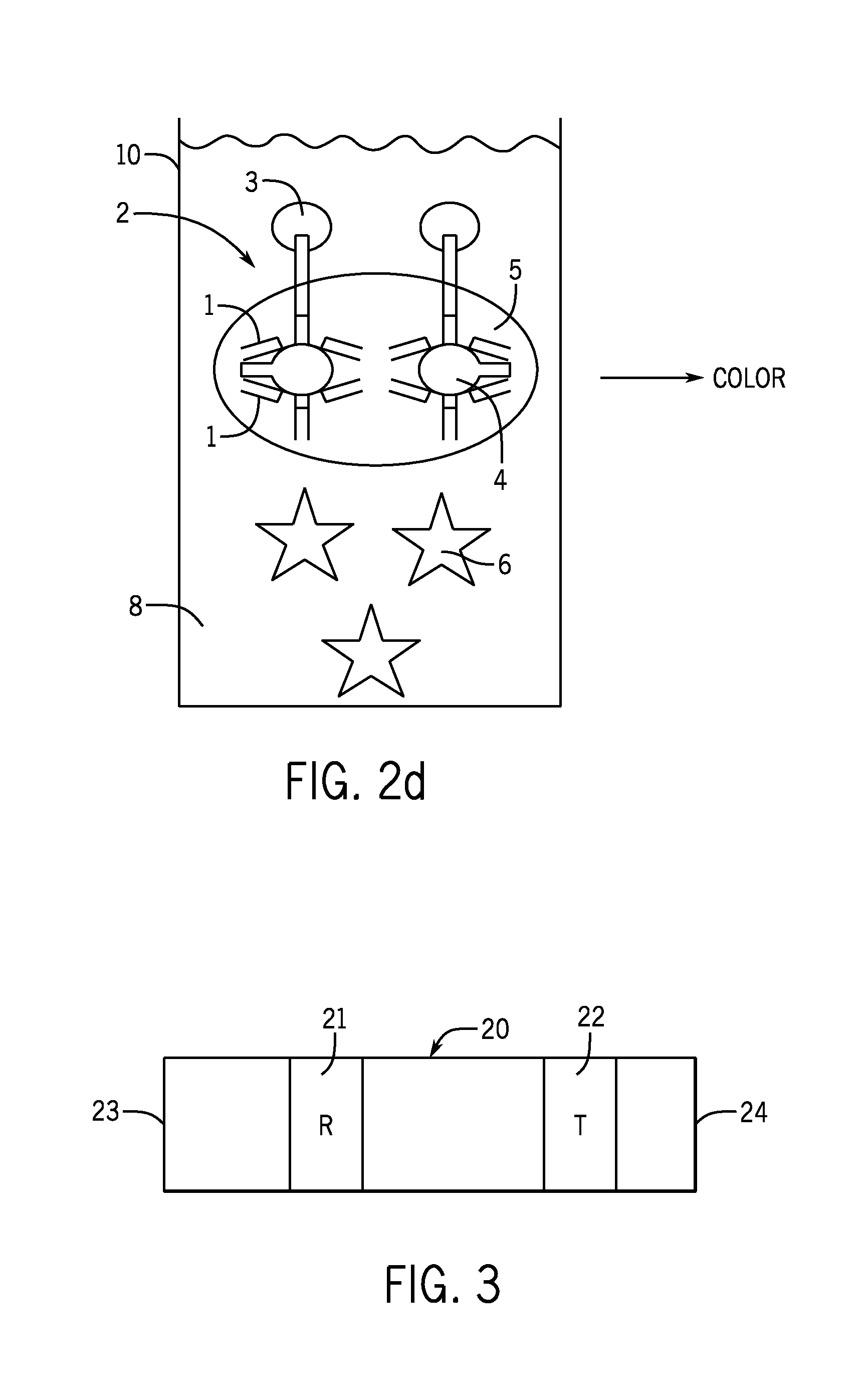Rapid Lyme antigen test for detection of Lyme disease
- Summary
- Abstract
- Description
- Claims
- Application Information
AI Technical Summary
Benefits of technology
Problems solved by technology
Method used
Image
Examples
Embodiment Construction
[0022]While the following description details the preferred embodiments of the present invention, it is to be understood that the invention is not limited in its application to the details of construction and arrangement of the parts illustrated in the accompanying figures, since the invention is capable of other embodiments and of being practiced in various ways.
[0023]The present invention provides an assay for B. burgdorferi antigens. The assay detects the presence of these antigens in the body fluids of infected individuals during the critical early stages of the infection as well as during the chronic stages of the infection. The present invention accomplishes this through the use of a polyclonal antibody that reacts to B. burgdorferi antigens found during all stages of infection in the patient's urine. The polyclonal antibodies utilized by the present invention have reactivity with the 31, 34, 39, and 93 kDa antigens of B. burgdorferi. The specificity of the polyclonal antibodi...
PUM
 Login to View More
Login to View More Abstract
Description
Claims
Application Information
 Login to View More
Login to View More - R&D
- Intellectual Property
- Life Sciences
- Materials
- Tech Scout
- Unparalleled Data Quality
- Higher Quality Content
- 60% Fewer Hallucinations
Browse by: Latest US Patents, China's latest patents, Technical Efficacy Thesaurus, Application Domain, Technology Topic, Popular Technical Reports.
© 2025 PatSnap. All rights reserved.Legal|Privacy policy|Modern Slavery Act Transparency Statement|Sitemap|About US| Contact US: help@patsnap.com


